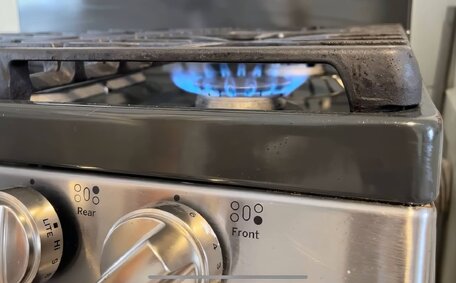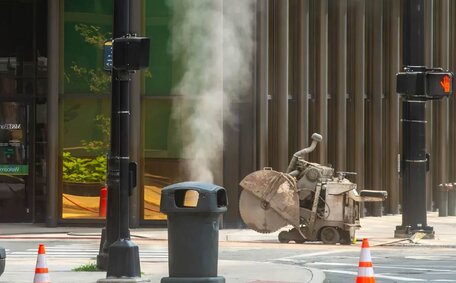Introduction to Pipe Relining: An Overview of the Process and Its Benefits
Pipe relining is a trenchless method of repairing damaged pipes without the need for extensive excavation or pipe replacement. It involves installing a resin-saturated liner within the existing pipe to form a 'pipe within a pipe’ with excellent flow capacity and structural integrity.
Compared to traditional pipe replacement methods, relining provides numerous benefits:
- Cost-effective - Eliminates the high expenses of digging, removal and pipe installation with savings of 50% or more
- Minimal disruption - Little to no destruction of landscaping, driveways or other structures on a property
- Long lifespan - Liners come with an average 15-year guarantee as they are extremely durable
- Versatile - Effective for resolving issues like root penetrations, corrosion, cracks and blockages across many pipe types and diameters
The procedure begins by using CCTV cameras to thoroughly inspect the damaged pipe and determine if it meets requirements for relining. The flexible resin-saturated liner is then inserted through an access point and expanded using heat or air pressure to adhere directly to the old pipe walls.
Next, the pipe is cleared of debris and prepared via high-pressure water jetting. As the liner cures, it forms a robust 'pipe within a pipe’ able to withstand decades more use.
In summary, pipe relining enables the extensive restoration of damaged drainage and sewer pipes through a minimally invasive process that saves time, money and environmental impact in the long run.
It can resolve common issues like root invasion, cracks, corrosion and blockages to efficiently restore pipes for 15 years or longer without the major works of full replacement.
What is the Minimum Pipe Diameter That Can Be Relined?
Pipe relining can effectively restore damaged pipes ranging from 40mm to 225mm in diameter. The lower end of 40-50mm are more intricate to line and require experienced technicians, specialised lining materials and additional preparation to achieve quality results.
For pipe diameters under 100mm, technicians may opt for a pull-in-place epoxy lining which involves saturating a felt material with epoxy resin that is pulled through the pipe manually via rope and expanded by an inflatable bladder once in position.
Larger pipes between 100-225mm suit more common CIPP (Cured-in-Place Pipe) liners that are inverted or pulled into the old pipe then expanded through heat or air pressure. These maintain close to the full diameter during installation with only a slight reduction post-cure.
So in summary, whilst relining capacity remains high across all suitable diameters, the 40-225mm range reflects technical limitations in effectively lining very narrow or overly large pipes. With precision materials and an experienced relining team, excellent flow restoration is achievable for residential, commercial and municipal pipes across this diameter range.
Impact of Diameter Reduction Post-Relining
After the relining process, there is typically a small reduction in the pipe’s inner diameter of around 6mm due to the liner material. However, this minor decrease has a negligible impact on the pipe’s flow capacity and performance.
To put this into perspective, reducing a 100mm pipe down to 94mm post-relining decreases the cross-sectional area by only around 10%. Using a familiar comparison, this is similar to losing one lane on a 4-lane highway – traffic can still flow smoothly despite the partial loss of capacity.
For residential plumbing and drainage systems, a 6mm diameter decrease will not noticeably affect typical household flows or drainage. The rigid epoxy or polyester materials used for liners are also smooth, meaning there is less friction loss compared to an aged pipe, helping to offset the mildly reduced capacity.
Commercial and municipal relining projects take the post-lining diameter into account when selecting the correct liner dimensions to match the required flow rates and gravity drainage needs. An experienced relining company will carry out pipe flow calculations to ensure the minor diameter reduction does not impede performance.
So in summary, the approx. 6mm diameter decrease post-relining has a negligible impact on flow rates and capacity for most residential, commercial and municipal pipes. The strength and smoothness of the liner pipe also help maintain efficiency, meaning excellent outcomes for the life of the restoration.
Types of Pipes Suitable for Relining
Pipe relining can be applied to repair and restore most pipe materials found in residential, commercial and municipal settings across Sydney and greater Rockdale region, including:
- PVC (polyvinyl chloride)
- Concrete
- Cast iron
- Galvanised steel
- Vitrified clay
- Asbestos cement
The existing pipe material is largely irrelevant provided it meets integrity, diameter and access requirements. Technicians inspect the pipeline via CCTV to ensure it has enough remaining strength to withstand installation pressures and cure in place properly.
Beyond typical horizontal pipes, relining can also be applied to:
- Vertical stacks and downpipes
- Junctions and bends
- Pipe diameters between 40-225mm
The resin-impregnated liner placed inside the damaged pipe conforms to the exact shape of the original, restoring junctions, bends and vertical sections just as effectively as straight horizontal pipes.
So whether it’s ageing terracotta drains under the home, rusting galvanised steel pipework supplying apartments upstairs or cracked vertical drainage stacks - pipe relining provides an efficient and adaptable restoration solution suitable for most pipe configurations, directions and materials found across Rockdale and wider Sydney regions.
Addressing Root Penetration Issues with Pipe Relining
With the extensive gardens, parks and bushland surrounding much of Rockdale and greater Sydney, tree and shrub roots penetrating ageing underground pipes is a prevalent issue plaguing homeowners and property managers.
As roots seek out moisture within pipe joints, cracks or existing breaches, they gradually invade drainage networks, causing major pipe blockages, water logging, sewer overflows and extensive property damage over time if left unchecked.
Whilst the only definitive solution is full pipe replacement, relining provides an efficient and cost-effective way to halt root breaches and restore damaged drains affected by invading roots in Rockdale homes and buildings.
Root Removal Prior to Relining
Before proceeding with relining a root-infested pipeline, roots must first be cleared to enable proper liner installation and curing. Using remote-operated root cutting tools and high-powered water jetting, roots are sheared at breached joints or existing cracks then washed clean from the pipe interior.
Further preventative measures involve sealing joints and applying protective epoxy coatings to eliminate moisture ingress points where new roots could otherwise re-enter post lining. Only once the pipe is fully root-free and breaches sealed can the trenchless relining proceed.
Long Term Root Prevention Through Pipe Encapsulation
By encapsulating the existing pipe with a seamless epoxy or polyester liner, pipe relining leaves no gaps, joints or cracks for roots to exploit. It essentially creates an impenetrable ‘pipe within a pipe’ that halts all moisture ingress.
This prevents the pipe corrosion that allows root footholds whilst eliminating fractures and joints roots typically exploit to gain entry. With no moisture and no physical breaches remaining post-lining, invasive tree and shrubs roots have no means to re-enter the newly restored pipe.
So through an initial intensive root clearing process combined with the preventative barrier of a tough resin liner, pipe relining provides long-term root damage prevention, stopping recurrence for a guaranteed 15 years at minimum.
For Rockdale homeowners and property managers battling root invasion and drainage damage, relining is an accessible and proven solution to permanently halt root breaches and restore free-flowing drains across affected properties.
Frequently Asked Questions About Pipe Relining
When do you recommend pipe relining over replacement?
We generally recommend pipe relining when there is moderate pipe damage, such as cracks, fractures, joint misalignments or corrosion damage that is obstructing flow. Relining can restore integrity cost-effectively compared to full replacement. Its also preferred for tricky access situations where digging is not practical.
How do you assess if my pipes are suitable for relining?
Our technicians use CCTV pipe inspections to thoroughly assess pipe condition, shape, material and diameter. Provided the pipe has retained some structural stability with no complete collapses or deformations, meets minimum diameter requirements between 40-225mm and has service access points, relining is usually possible.
Is all plumbing pipework suitable for relining?
Whilst relining suits most pipe materials and configurations, lead piping cannot be lined reliably due to its shape variability. Similarly very narrow, overly large or completely collapsed pipes fall outside what can be restored through relining. Our pipe inspection reports assess all these factors to determine relining viability.
For advice on all your specific pipework or to book an inspection, contact our team at [email protected] or call 1300 349 338.






